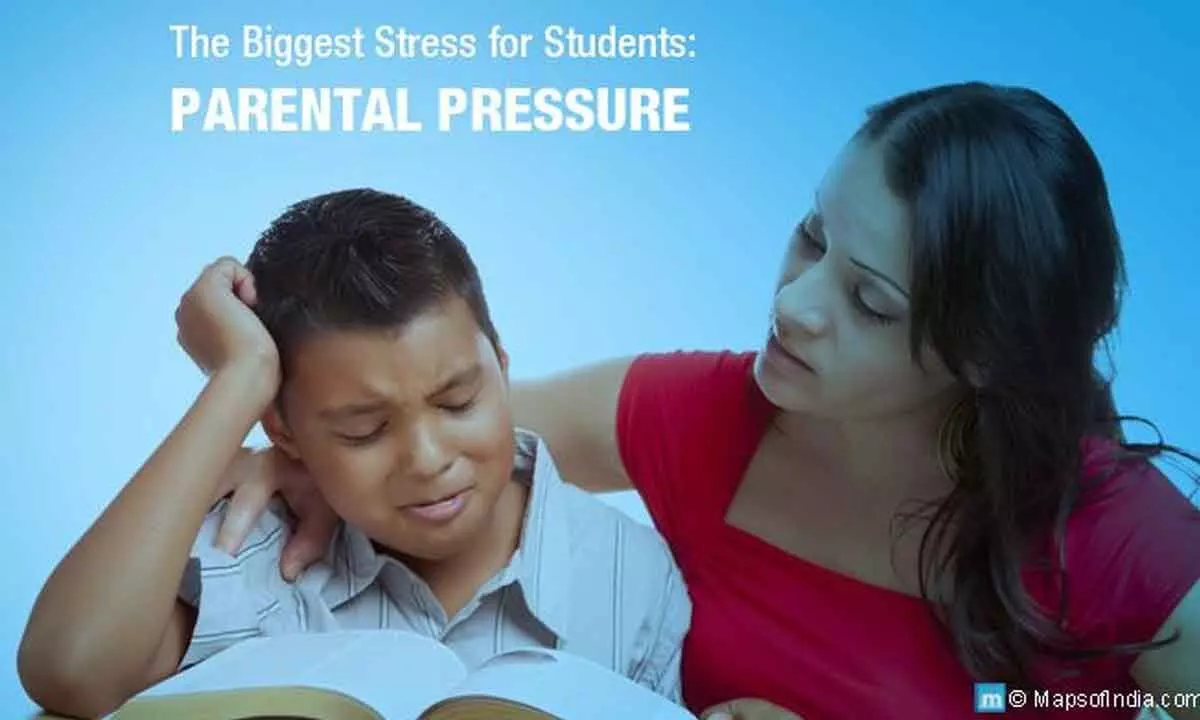Ailments among young Indians can be handled with effective parenting
The World Health Day 2024 is aptly themed ‘My health, my right’
image for illustrative purpose

Some signs that a teen is struggling may include noticeable changes in appetite and sleep, aggression, irritability, difficulty concentrating, avoiding social activities, and engaging in self-harm or having thoughts of suicide
Indian youngsters in the age-group of 10-24 years constitute one of the precious resources of the country, characterized by growth and development, and is a phase of vulnerability often influenced by several intrinsic and extrinsic factors that affect their health and safety. Nearly 10-30 per cent of young people suffer from health impacting behaviours and conditions that need urgent attention of policy makers and public health professionals.
Nutritional disorders (both malnutrition and over-nutrition), use of tobacco, alcohol and other intoxicating substances, high-risk sexual behaviours, stress, common mental disorders, and injuries (road traffic injuries, suicides, violence of different types) specifically affect this population and have long lasting impact.
The World Health Day 2024 is aptly themed ‘My health, my right’. It was chosen to champion the right of everyone and everywhere to have access to quality health services, education, and information, as well as safe drinking water, clean air, good nutrition, quality housing, decent working and environmental conditions and freedom from discrimination.
For most children, tension at home is a common source of stress. They may be troubled by family discord, divorce, or loss, for example. Even happy changes, such as a new home, the arrival of a new sibling or a new stepparent can also be hard on a child.
School is another frequent source of concern for kids. They could be stressed about making friends, dealing with bullies or with their teachers. They might also be anxious about tests and grades.
More significant stress is also rising in this cohort. While pediatric emergency department visits declined during the pandemic, the number and proportion of mental health-related emergency department visits increased among children aged up to 11 years.
As children get older, their sources of stress expand. Teens are more likely than young children to be stressed by events or situations outside their home.
Mental health crises are on the rise for this age group as well, with mental health-related emergency department visits increasing for kids aged 12 to 17 years compared with 2019 emergency department visits. In particular, emergency departments saw increases in visits related to self-harm, drug poisonings, and eating disorders among this age group since the pandemic’s onset.
Peers can help buffer stress and also be a source of it. Social relationships are especially important in adolescence. Many teens worry about fitting in their first romantic relationships and peer pressure around substance use and sex.
Just like adults, kids and teens need time to do what brings them joy, whether that’s unstructured time to play with building bricks or uninterrupted hours to practice music or art. Also, while some children thrive bouncing from one activity to the next, others need more down time. Find a healthy balance between favourite activities and free time.
Children and teens can easily fall into the trap of negative thinking. When children use negative self-talk, though, don’t just disagree. Ask them to really think about whether what they say is true, or remind them of times they worked hard and improved. Learning to frame things positively will help them develop resilience to stress.
Stress is the body’s reaction to danger or excitement, including positive things such as an upcoming party or a vacation. Stress causes the body to release hormones that can raise blood pressure, heart rate, or blood sugar.
Anxiety is the body’s or mind’s response to stress, even when there are no current stressors. Dr. Lewis said this often comes from the fear of a future outcome that may not even happen.
For example, you may be worried about getting into college or an important exam: “You already had the test, but you’re still feeling anxious…You’re worried about the next test now.”
Physical symptoms of stress and anxiety include headaches, trouble sleeping, digestive issues or muscle pain. If left untreated, these symptoms can damage the body and lead to other mental health issues, including anxiety disorders.
For adolescents, stress and anxiety can be hard to talk about. Some signs that a teen is struggling may include noticeable changes in appetite and sleep, aggression, irritability, difficulty concentrating, avoiding social activities, and engaging in self-harm or having thoughts of suicide.
Having a schedule or routine is also important for adolescents. Sometimes it’s less about creating a schedule and more about modifying the schedule you already have.
Schedules are useful in that they help create a routine, and it gives young people something to look forward to. When you’re able to create a schedule and you know what’s upcoming, that can help you to manage stress and anxiety by minimizing the unknown. Remember that schedules should incorporate fun and relaxation.

